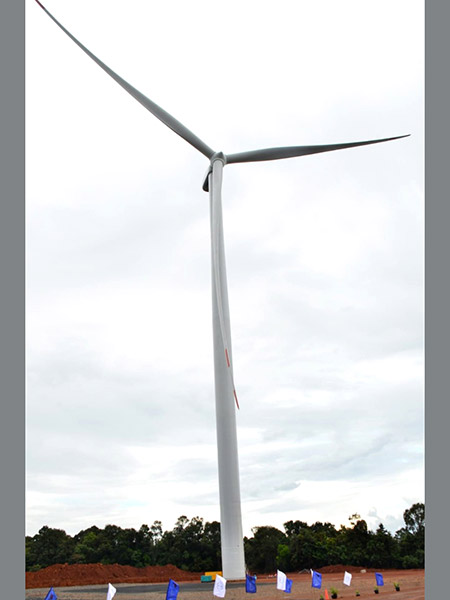 |
| The 600MW Monsoon Wind Power Project under construction in southern Laos. |
Vietnam eyes purchase of wind power from Laos
Vietnam is keen to import wind power from Laos as it seeks to address power shortages in the northern region driven by its fast-growing economy, according to a Vietnamese online newspaper (VnExpress).
“The imports will help bridge a supply gap in the northern region between 2024 and 2030, especially in summer when water levels plummet in hydropower dams,” the news outlet said.
“Laos’ maximum wind power feed-in tariff is 6.95 US cents per kilowatt-hour for plants that become operational by the end of 2025, which is much more competitive than Vietnam’s 8.5 cents for onshore and 9.8 cents for offshore plants that went on stream before November 2021.”
Investors building wind farms in Laos with a combined capacity of more than 4,000MW mostly intend to export electricity to Vietnam.
Vietnam’s electricity shortage was estimated at nearly 10 billion kWh in 2022 and could rise further to about 15 billion kWh in 2023, according to calculations by the Vietnamese Ministry of Industry and Trade.
Electricity of Vietnam expects that by 2025 Vietnam will buy a minimum of 3,000MW from Laos, increasing to 5,000MW by 2030.
Last month, Lao Prime Minister Sonexay Siphandone led a ceremony to mark the installation of the first turbine of the 600MW Monsoon Wind Power Project, in Dakcheung district, Xekong province.
It will be the largest wind farm in Southeast Asia, with a production capacity of 600MW and a total construction cost of US$900 million. The power generated is destined for sale to Vietnam.The wind farm will consist of 133 turbines, which are expected to be installed by the end of 2025 on a 1,000-hectare site stretching across 25 villages.
The state-run Electricity of Vietnam (EVN) was quoted by VnExpress as saying that some hydropower plants in Laos with whom it has signed purchase agreements would only begin generating power after 2025, meaning alternative sources are needed in the next two years.
EVN urged its government to install more transmission lines to increase imports from Laos. In the first 11 months of this year Vietnam’s electricity imports from Laos and also China accounted for 1.5 percent of total supply.
By Times Reporters
(Latest Update December 21, 2023)
|


